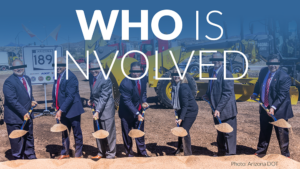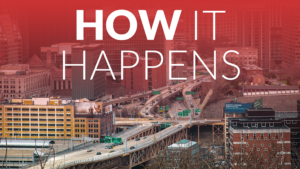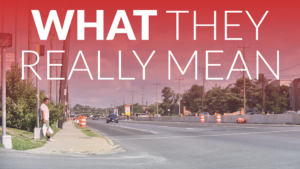Related Resources
Community Connectors Portal: Tools for advocates > Who is involvedBuilding relationships
Advocacy 101: 10 tips for building relationships
You will need good relationships with decision makers to influence public policy. That will range from friendly champions to those who are on the fence to those who are opposed. These relationships will often require building bridges to people with views you disagree with. While aggressive, confrontational advocacy has its place, it’s often counterproductive to making real change. Here are some tips for building productive relationships without forfeiting your own values or positions.
1. Make contact
There are a number of ways to get in touch with decision makers. You can request an appointment, attend an event that they are hosting or also attending, or invite them to your event. Meeting legislators in your district rather than the capital establishes you as a constituent. Make sure to also cultivate relationships with a decision maker’s staff, since they will often be someone you can meet with more frequently.
2. Listen first, start slow, learn about their priorities
In a world of people who are just waiting for their turn to talk, try listening deeply. People appreciate genuine curiosity. Enter conversations with the true intention of understanding your counterpart and learning what they care about. Pitch them on your views only after gaining a good understanding of theirs. Every elected leader already has an agenda—how can your work advance what they want to accomplish? Listening will provide you with openings that were not previously evident.
3. Find a personal connection and shared values
All relationships have to start at a personal level. As with all people, powerful individuals are more likely to find common ground with people with whom they have a personal connection. To do this, you should find a topic of conversation that narrows the degrees of separation between you. For example, are you from the same city as this person? Do you know some of the same people? Do you root for the same sports team? Especially for the skeptical, undecided, or opposed people: What do they agree with you about? Instead of trying to persuade skeptical or oppositional people about your projects, listen and understand their values and see if it lays out a path for how you can bring them along. E.g, perhaps they deeply value safety and stability, but they’ve never thought about how street design impacts both. That’s an opportunity.
4. Assume good intentions
This one is hard—especially for people with views you disagree with—but approach conversations assuming that you and your counterpart are working to solve problems. Avoid speaking in a condescending manner or telling them off. Don’t ever close the door on someone in a position to help.
5. Look for opportunities for praise
When meeting with someone, find something, anything, to praise them for right off the bat. Elected leaders never tire of being praised for the things they do, and they notice when they carry someone’s water and don’t get public praise. So do not miss a chance to publicly praise them for good things they do. Get them to like you on that one point. Even a small bit of common ground can help smooth over disagreements later in the conversation.
6. Don’t start with public shaming
If you shame or embarrass someone publicly, you will close any opportunity for influence you may have had with them. Start by pointing to a problem and inviting that official to join you in tackling it. Save public shaming for when you’ve exhausted all other options, but be prepared for that person to come back at you hard. Rarely you may accept the risk of angering a decision-maker to pressure them. Constructive tension, first behind closed doors, and only very sparingly in public, is most productive in pushing a decision-maker when your relationship with them is well-developed and they crave champion status on your issue.
7. Support a shift in position
You don’t need to change someone’s public positions for them to do what you want. If at all possible, allow your adversaries room to maintain their dignity while quietly helping you achieve your goals. When someone does shift their position, even partially, support that shift and give them appropriate credit. If there is no benefit to changing a position, no one will—and that is the end of advocacy.
8. Focus on personal stories
Facts do not persuade on their own, and they’re never as compelling as the stories of real people. This is particularly true when those people can accompany you for conversations with decision-makers to tell their own story directly. Stories open us up in deeper ways and have the power to change the minds of people whose policy positions may otherwise oppose yours. Conversations about transportation, for instance, need to be about the stories of the individual human beings who use roads and transit and how the current system impacts their daily lives.
9. Cultivating empathy can change hearts and minds
Building on the last point about stories, look for opportunities to cultivate empathy within those you are trying to persuade. If you’re running a transit campaign, ask them to ride the bus with you. If you are after better bike lanes, ask them to come and take a ride with you and make it impossible for them to say no. Don’t just tell them about your point of view—put them in positions where they can experience it firsthand and understand it.
10. They are underestimating you
Here’s the good news. Most powerful people will underestimate the average advocate. Beginning a relationship on a friendly footing, armed with useful information will impress your counterpart and make them more likely to engage with you in the future.
No matter how strong your points are, how many facts and figures you bring to the table, or how loud you are, your advocacy will find little footing without strong relationships. So considering these strategies can get you in the door and to the decision making table.






